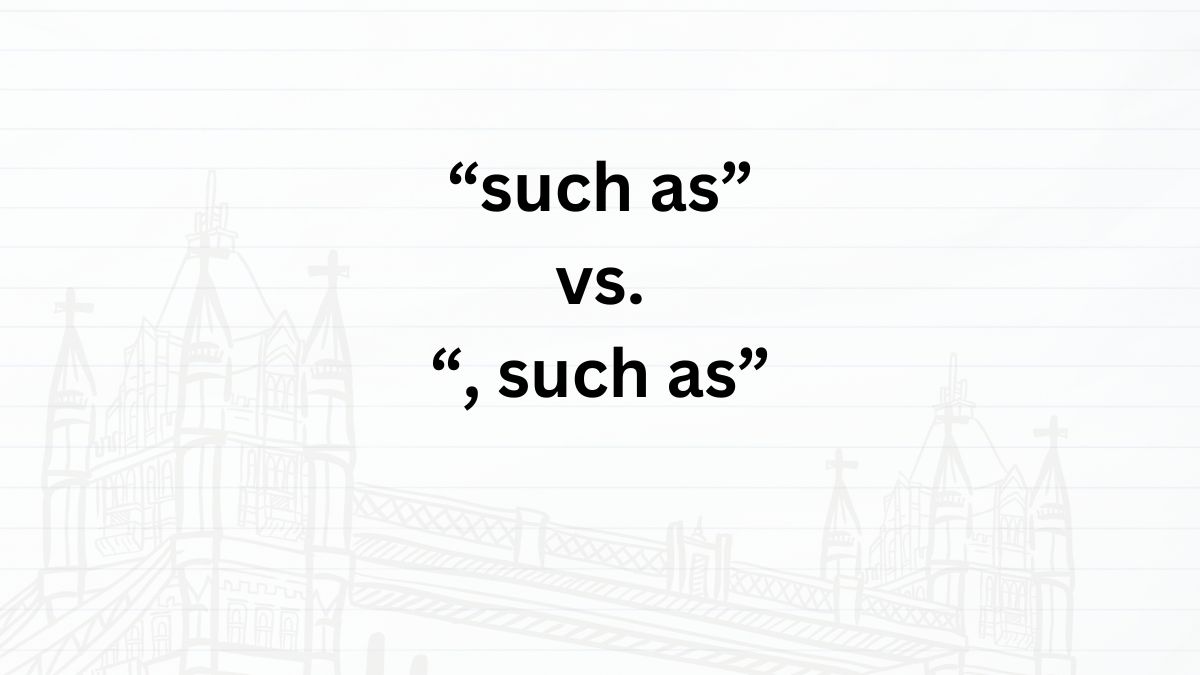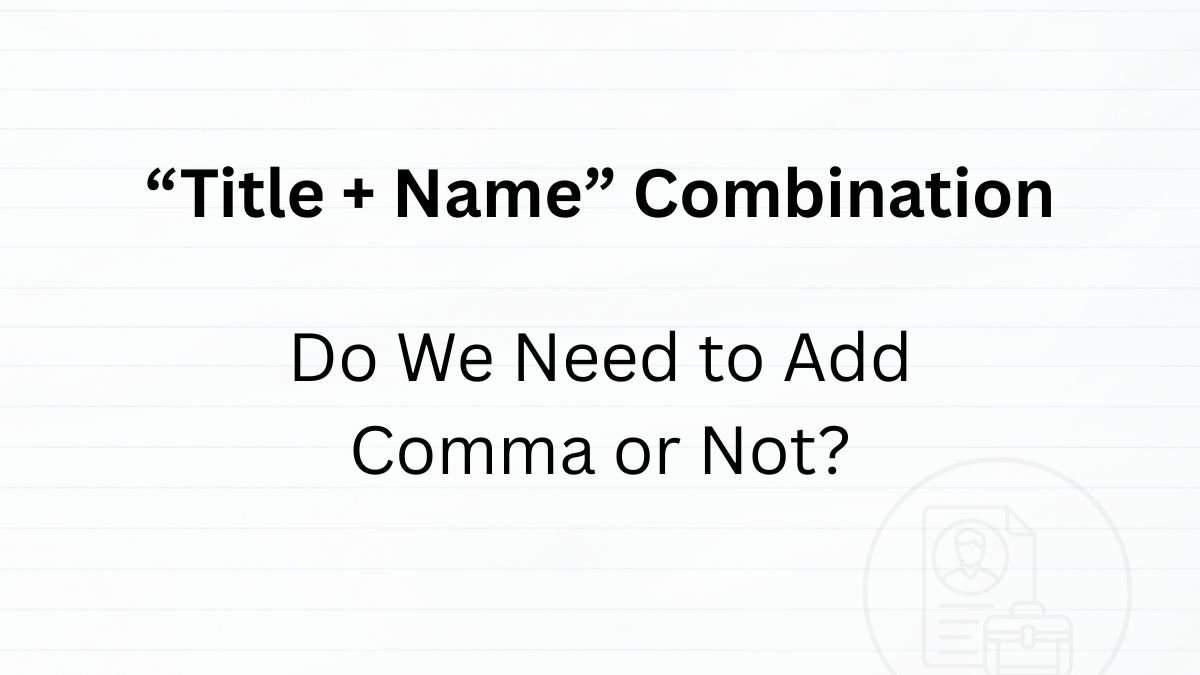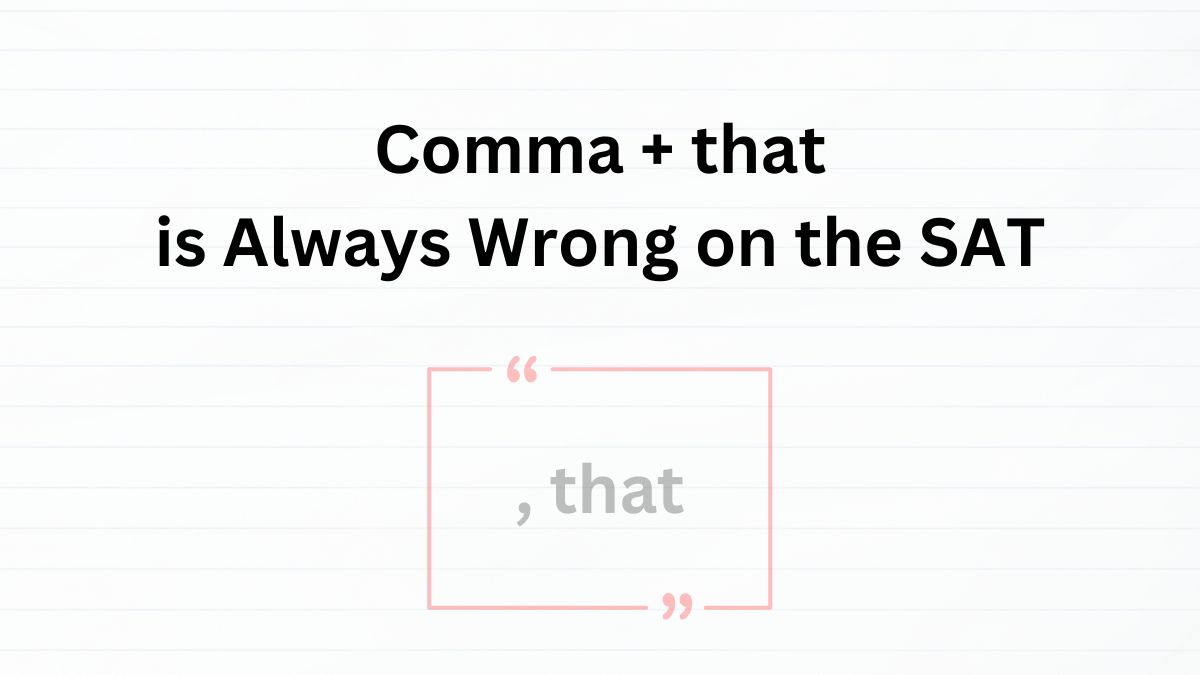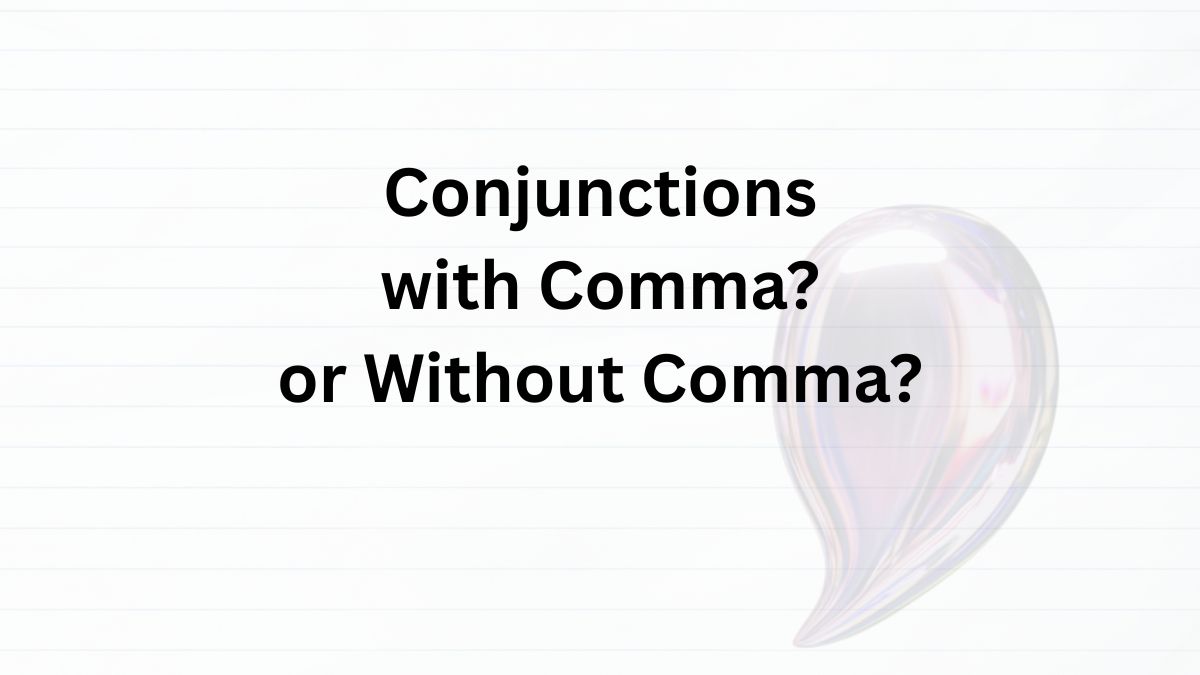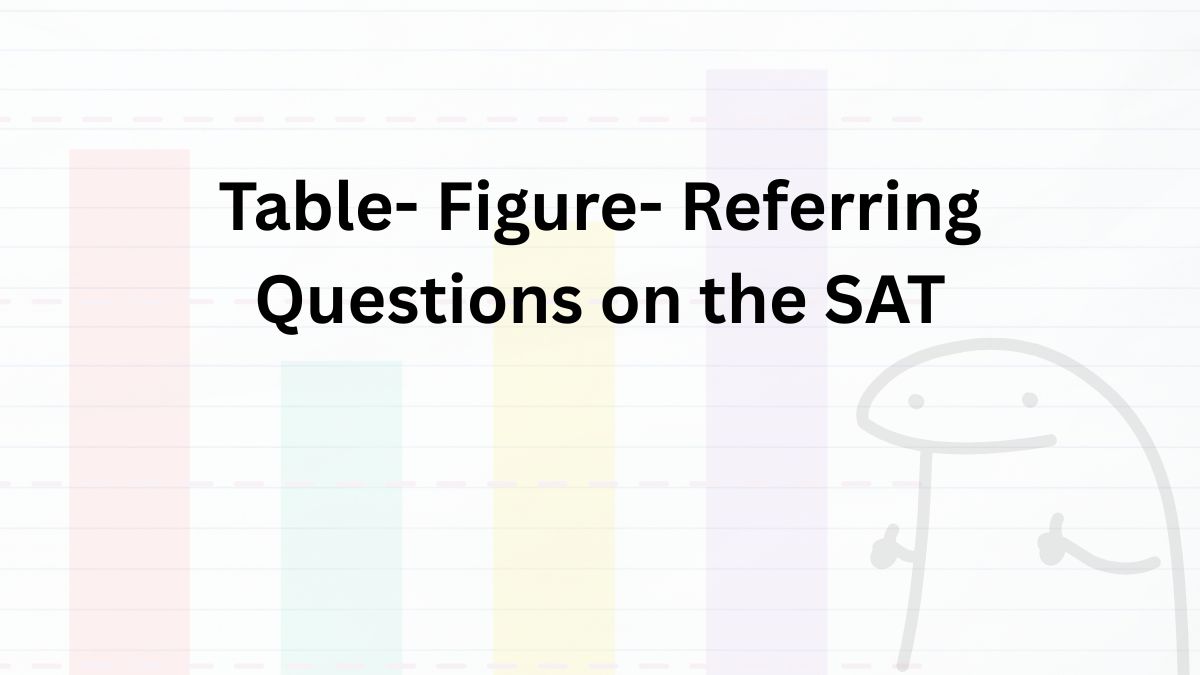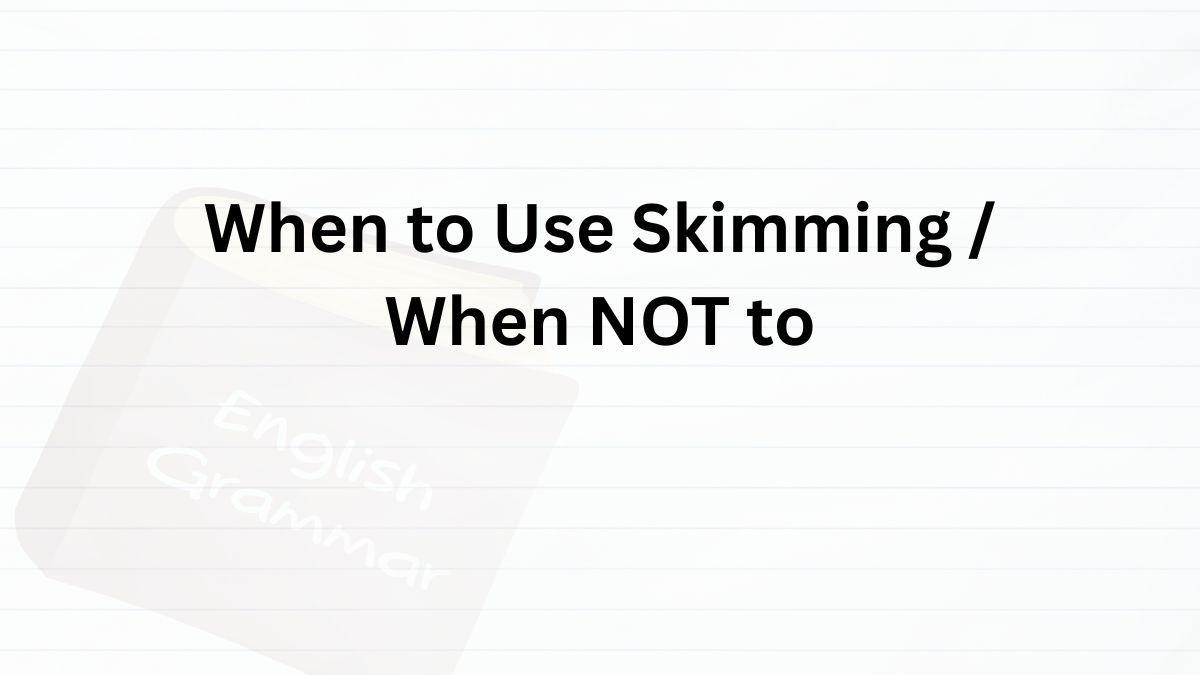
The Two Pivotal Uses of Colons on the Digital SAT
Table of Contents
On the SAT, you can expect to see at least a couple of questions about punctuation in every module. The test only checks a few marks, limited to colons, semicolons, em dashes, and commas. In this article, we’ll take a closer look at colons and the two ways you need to use them correctly on the SAT.
Quick Summary
What comes before a colon must always be an independent clause. What comes after the colon can be a word, a phrase, or even another independent clause.
On the SAT, a colon is tested for only two main purposes:
- Introducing a list of items that relate to the idea in the previous clause
- Introducing a detail or explanation that expands on the preceding statement
How Are Colons Used on the SAT?

Colons show up often on the test. In everyday writing, they may serve different roles, but for the SAT, only two uses matter. Once you understand these, you’ll be ready for any colon question you face.
- Introducing a list of items
- Introducing a detail
Key Grammar Rule of Colon
Whenever you see a colon, keep one rule in mind: the part that comes before it must form an independent clause (i.e., a complete sentence), a sentence that stands on its own and communicates a full idea. If the sentence before the colon already work properly, that’s grammatical.
Common Mistakes

A frequent trap on the SAT is the colon placed immediately after a short phrase or fragment. That placement is wrong because a fragment cannot support a colon; the test writers use this to check whether you remember the rule. The colon belongs only after a full, stand-alone sentence.
In the following section, we’ll look more closely at the two ways the SAT actually expects you to use colons.
Introducing a List of Items
One common job of a colon is to bring in a list, but only after a complete sentence. When you use it this way, the list is considered closed, not open-ended.
I like animals: cats and dogs.
This tells the reader your list stops with cats and dogs. Other animals, such as rabbits, horses, or anything else, are not part of it. That is different from expressions like “such as” or “including,” which leave the door open to more examples.
I like animals such as cats and dogs.
Now the meaning changes: cats and dogs are examples, but other animals (wolves, lions, etc.) may be included too.
More Examples of Colon Introducing a List of Items
Putting on a successful stage production requires close coordination among many departments. Before opening night, the director must make sure everything is ready: lighting, sound, set design, and costumes.
Here, the sentence before the colon is complete on its own, and the list that follows fits naturally. This makes the colon usage correct.
Deep-sea exploration has grown rapidly in recent decades, giving scientists access to parts of the ocean that were once unreachable. To make such missions possible, research vessels usually carry specialized tools: robotic submersibles, sonar mapping systems, water samplers, and pressure-resistant cameras.
In this case, the colon introduces a closed list of specific equipment. Because the words before it form a full sentence, the colon is placed correctly.
Before moving on to the next use of colons, let’s pause and look at a common mistake.
(✗) The tools needed for the mission are: robotic submersibles, sonar mapping systems, and cameras.
In this sentence, “The tools needed for the mission are” is not a complete sentence. It is unfinished, so the colon cannot be used properly.
(✓) The mission requires several tools: robotic submersibles, sonar mapping systems, and cameras.
Here, the words before the colon form a complete thought. That makes the colon usage correct.
Introducing a Detail
The colon is not limited to lists. It can also be used to point directly to a detail that explains or sharpens the idea before it. This usage tends to show up in the more challenging SAT questions, so it’s worth paying close attention.
Be careful that what follows the colon does not always have to be another full sentence. It can be a single word, a short phrase, or a complete clause—each is acceptable as long as it makes the first part clearer.
Many people have one important quality in their mind: love.
Here the colon leads to a single word that defines the thought. Even though only one word comes after it, the sentence is fully correct.
I love animas: they neither lie nor betrey us.
This time, the colon introduces a whole independent clause. The second part explains why the speaker loves animals. Because the first part is already a complete sentence, the colon can properly connect it to the explanation that follows.
(✗) I love animals: my favorite subject is math.
Here, the first clause and the second clause are not directly connected. The colon is supposed to introduce a detail or explanation about the first idea, but “my favorite subject is math” has nothing to do with loving animals. That makes the colon use incorrect.
More Examples of Colon Introducing a Detail
Athletes at the highest level often face intense mental pressure during competition. Success frequently depends on one crucial skill: staying calm under pressure.
Here, the colon introduces the specific skill that determines success: staying calm under pressure. The part before the colon is an independent clause, which makes this usage grammatically correct. Even though the phrase after the colon isn’t a full sentence, it’s still acceptable because it adds detail to the idea introduced before the colon.
Here’s another example with, this time, an independent clause following the colon.
The study revealed one significant trend: students who received regular feedback improved faster than those who did not.
The part “students who received regular feedback improved faster than those who did not” is an independent clause because it has the subject “students who received regular feedback” and its corresponding verb “improved (faster than those who did not).”
Patterns and Solutions
The following SAT-style question tests your understanding of how to use a colon.
Explanation
Among the options, none presents a list of items, which means the blank should be filled with a detail that explains the preceding clause. It’s also important to note that the sentences following the blank primarily emphasize the practicality of building designs.
The only option that aligns with this idea is “aesthetics should never compromise usability”, as it clearly focuses on practicality.
On the other hand, “some buildings appear futuristic or unconventional” and “city residents expect more from public infrastructure” do not connect logically with the flow of the passage.
“Though practicality must come first” is also incorrect. While it may relate to the topic, it’s a dependent clause. What comes after a colon must be an independent clause, a phrase, or even a single word. A dependent clause can’t come after the colon.
Practice Questions
Question 1
Explanation
First, let’s consider the grammar. The sentence “Researchers believe the society was organized around” is incomplete—it doesn’t form a full thought on its own. Because a colon must follow an independent clause, we can’t place a colon directly after this fragment.
This eliminates the option of using just a colon, or “and:”, since neither forms a complete sentence before the colon.
That leaves us with two remaining choices: “a core principle:” and “buildings:”. Both are grammatically acceptable, but “buildings:” doesn’t logically connect to the detail that follows—“centralized authority governed both spiritual and civic life.”
Therefore, “a core principle:” is the best choice. It not only fits grammatically, but also clearly introduces the explanatory detail that follows the colon.
Question 2
Explanation
“Physical conditioning, simulations of zero-gravity environments, technical skills training, and emergency response drills” is the most suitable option, as it clearly and correctly lists the rigorous programs that trainees are required to complete.
“They must learn to adapt physically and mentally to unfamiliar environments” is grammatically acceptable, but the repeated use of must makes the sentence feel redundant and stylistically awkward.
Both “trainees often struggle with underwater exercises and pressure chamber tests” and “passing the final exam is necessary for selection” are inconsistent with the flow of the passage and do not directly support the idea of listing required training components.




